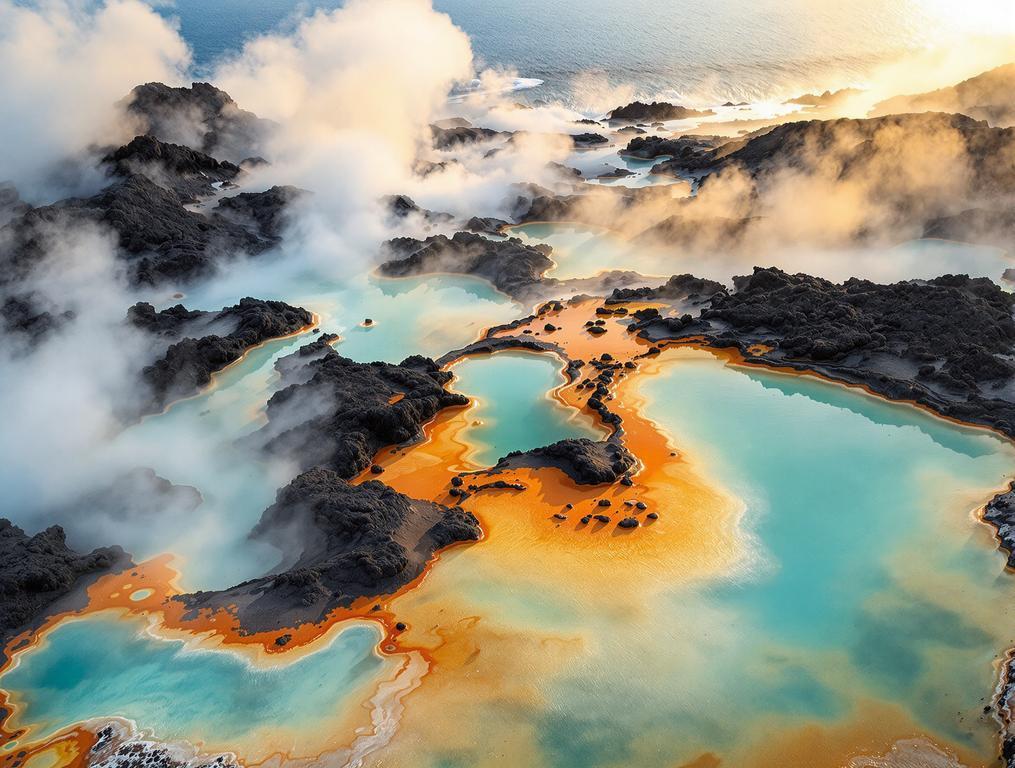I step onto the ferry dock at Vulcano Porto, my shoes already dusted with volcanic ash. The unmistakable rotten-egg scent of sulfur envelops me like an ancient welcome. This tiny Aeolian island of just 450 residents sits in the shadow of an active volcano whose fumaroles reach a scorching 500°C. I’ve visited thermal destinations worldwide, but something feels different here – raw, untamed, and surprisingly uncrowded despite being just 22 kilometers north of Sicily.
The contrast hits immediately: while thousands crowd Santorini’s caldera rim for sunset selfies, here I count only seven fellow travelers disembarking. As we climb toward smoking vents along the crater rim, I can’t help wondering why this Mediterranean volcanic therapy haven remains so overlooked.
Vulcano’s 500°C Thermal Landscape Is Transforming Mediterranean Wellness
The Gran Cratere looms 391 meters above sea level, its yellow-rimmed fumaroles belching sulfurous steam visible from miles away. What strikes me isn’t just the dramatic landscape but the therapeutic potential. Unlike Iceland’s commercialized Blue Lagoon, Vulcano’s natural mud baths remain refreshingly unpackaged.
“When I step into these volcanic mud pools, I feel the Earth itself healing my body,” a German visitor tells me as she applies gray sludge to her arms. “People pay hundreds at spas for artificial versions of what’s freely available here.”
I follow a steep path toward Vulcano’s southern shore, where Fumarole Beach reveals the island’s most distinctive feature: natural thermal springs bubbling directly into the Tyrrhenian Sea. The temperature contrast is extraordinary – 35°C volcanic water merging with the cool Mediterranean. I wade in, feeling hot spots beneath my feet while cool currents brush my shoulders.
Unlike Greece’s crowded islands, Vulcano embodies the Italian concept of dolce far niente – the sweetness of doing nothing. Local restaurants serve fresh-caught seafood with capers grown in volcanic soil, while visitors soak in natural thermal pools without entrance fees or queues.
Why This Volcanic Island Outperforms Famous Thermal Destinations
The science behind Vulcano’s therapeutic reputation isn’t mere folklore. The island’s mud contains high concentrations of sulfur, bromine, and iodine – elements proven to alleviate skin conditions and joint pain. Unlike commercial spa products that synthesize these minerals, here they’re naturally concentrated by volcanic activity.
Japan’s volcanic peninsulas might be more famous for volcanic therapies, but Vulcano offers something increasingly rare: accessibility without commercialization. You won’t find luxury spa packages or Instagram-perfect setups – just raw nature and authentic healing.
“My grandmother brought me here as a child when my eczema wouldn’t heal. Thirty years later, I still return every summer. The medical spas in Germany charge €200 for treatments that can’t match what nature provides here for free.”
The island’s most dramatic feature – Valle dei Mostri (Valley of Monsters) – reveals volcanic rock formations weathered into fantastical shapes resembling mythological creatures. I hike through this otherworldly landscape as the setting sun turns the black rock formations golden, creating shadow plays that seem to animate these stone monsters.
What the Guidebooks Won’t Tell You
For optimal volcanic experiences, visit between 7-9 AM when fumarole visibility is highest and sulfur emissions disperse more effectively. The official mud baths near Porto di Levante remain technically closed in 2025, but locals direct visitors to natural pools with identical mineral content just 200 meters south.
Access the Gran Cratere via the eastern trail rather than the popular western path – you’ll encounter 50% fewer hikers and gain superior views across to Lipari Island. Bring a scarf to cover your mouth near fumaroles, as sudden wind shifts can make sulfur fumes overwhelming.
For an authentic experience, visit beyond peak season when the island’s population-to-visitor ratio becomes more balanced. In June or September, you’ll share thermal pools with locals rather than tour groups.
As I descend from the crater at sunset, I watch the sea shimmer gold against Vulcano’s black sand beaches. My photographer wife Sarah would capture this light perfectly, I think, making a mental note to return with her and our daughter. The Roman god Vulcan supposedly forged weapons in these fires, but today’s visitors discover something different: healing warmth from the earth itself, offered freely to those who venture beyond the Mediterranean’s well-worn paths.
